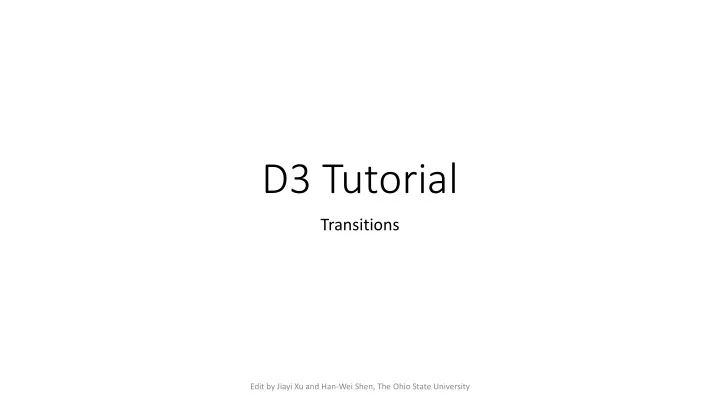

D3 Tutorial Transitions Edit by Jiayi Xu and Han-Wei Shen, The Ohio State University
Transitions • When the state of an element changes from current state to desired state, transition helps to apply the change smoothly by interpolating the states between the two end states • E.g. gradually growing bars
Transitions • Applications • Assist interactions • Story-telling • A series of visualizations connected by interactions and animations • A story about phones • https://www.visualcinnamon.com/2014/12/using-data-storytelling-with-chord.html
Populations of Cities - Slowly growing bars Create bars and specify • their attributes. By default, width is 0 •
Populations of Cities - Slowly growing bars • After creating bars, we create a transition Create a transition behavior • delay( milliseconds ): the transition will happen • after a certain milliseconds duration( milliseconds ): the transition will last • a certain milliseconds
Populations of Cities - Slowly growing bars Bind the transition behavior with bars • Then, the bars will gradually grow to the • final width
Populations of Cities - Slowly growing bars • Two alternative ways of coding have the same effect
Events • We can bind listeners to events of transition behaviors • d3.transition().on( EventType , listener ) • Events • start • Be triggered at the beginning of the transition behavior • end • After the transition behavior ends
Transition Chaining • We can create multiple transitions • When one transition finishes, next transition in the chain takes off Transition 1: The color of the circle changes • from blue to red; Transition 2: The color of the circle changes • back to blue, and the circle is moved to (600, 300).
Recommend
More recommend